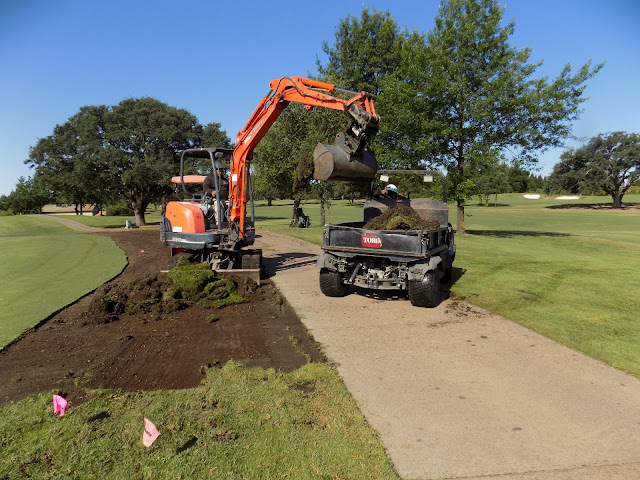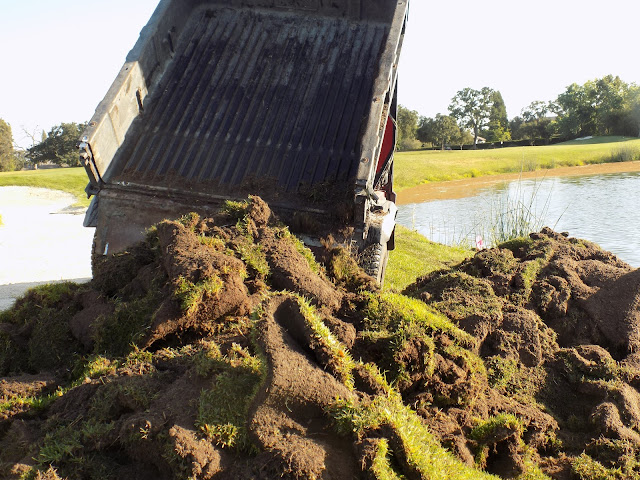GCM has had a very successful late 2024 and 2025 winter project season this year with the absence of any tree tumbling storms. We were able to check off many items from our GBGC Master Improvement Plan from cleaning up the back of #7 Green to irrigating and planting shrubs in some very bleak parking lot landscape beds.
Once we got through some weather around Christmas, we were able to make substantial progress on supplemental irrigation install on Holes #2, #15 & #12. All of these areas in the rough have been perennially bad in the summer and the cool season turf will now have a fighting chance. These supplemental irrigation blocks have only worked every time we have installed them here at GBGC so we are confident these areas will be much better this summer.
Now that Spring is in the air, we have to shift gears to cultural practices on the golf course. We have been aerifying rough the week of March 3rd through March 7th and will have some more to do next week. So ahead of some forecasted weather on Wednesday 3/12/25 we plan to spike and topdress the greens as well.
Spiking Greens
On Monday 3/10/25 we plan to spike and topdress the greens keeping in line with our small, but more frequent aeration events throughout the year. These aeration events are designed to keep putting surface disruption to a minimum year round avoiding traditional large hole aeration in the spring and fall. This accomplishes the desired goals not disrupting putting quality for extended periods of time and mitigating poa annua encroachment by not giving it a chance to get going in larger aeration holes. Below are pictures of the process that we will conduct on Monday.
| Step #1 is to aerate with the Procore 648. We are using a coring tine this time around to actually remove some organic material from the green. Weather is forecasted partly cloudy and in the upper 60's, perfect weather for this process. |
 |
Aeration holes are small. 1/4" in diameter maximum if that. The small hole combined with 2"X2" spacing will recover rapidly and will not deflect ball roll leaving putting quality intact especially after we thoroughly roll the surface's the morning after aeration. |
 |
Step 2 remove the coring material. We basically use blowers and scoop shovels to remove all of the debris from the surfaces
|
 |
Step 3 we usually mow the surfaces to remove any straggler cores that get stuck in the holes during initial cleanup. After mowing we blow the surfaces off again creating the finished product prior to sand topdressing depicted in the picture above with the ball mark repair tool. |
 |
Step 4 we are seeding the collars. More to come in the future on what are our ultimate plans with these collars. |
 |
Step 5 lightly topdress the surface with sand.
|
 |
Step 6 we brush the sand into the open holes and turf canopy.
|
 |
Step 7 is to irrigate. We typically irrigate deeply after opening greens up with aeration. This deep watering brings the greens soil profile to its field capacity as well as drawing air into the rootzone which is one of the main purposes of core aeration.
|
 |
View of Tilley's PG on Tuesday AM following a good rolling and blowing.
|


















































